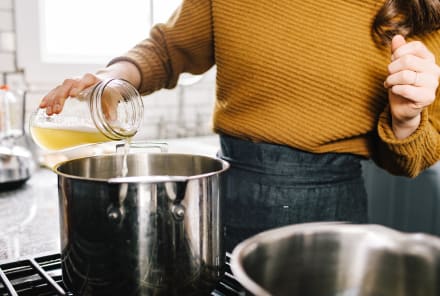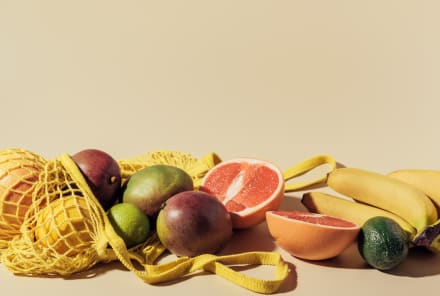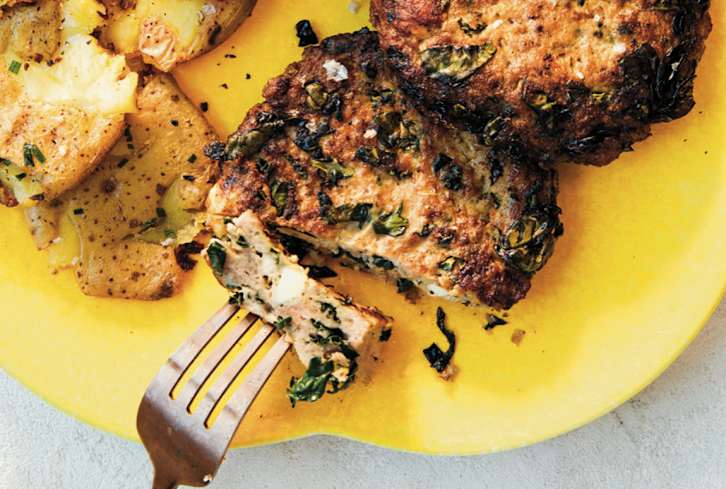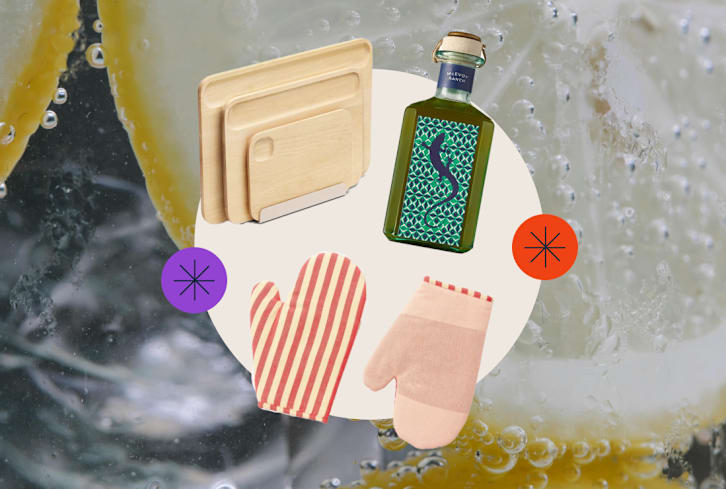Advertisement
8 Protein-Rich Foods To Help Combat Crepey Skin & Support Healthy Aging


Crepey skin is a very common texture type that appears with age. If you're trying to encourage healthy skin on the surface, you'll probably look to retinol, sunscreen, and maintaining a hydrated skin barrier as a starting off point. And what a great start! But it's only one part of a bigger skin care picture: To have truly healthy skin, you need to approach it from the inside, too.
Once you begin to explore inside-out skin care, you'll come across one question: What foods should I be consuming that encourage healthy, youthful-looking skin? Here, we dive into what causes crepey skin and which foods can help you encourage healthy skin aging from the inside (and maintain a balanced diet in general). Let's get into it.
What do we mean by "crepey" skin?
Party streamers that drape across ceilings with different twists, twirls, and color patterns are often made from crepe paper. The loose, wrinkly texture of this material makes the streamers pliable so they can be shaped into any sort of design.
This paper is where the term "crepey" skin comes from, as the loose, subtly wrinkled skin has a similar appearance. You'll generally find this crinkly texture in areas with thinner skin like the upper arms, under the eyes, and the neck.
There are plenty of factors that lead to crepey skin, thus plenty of ways to encourage tighter, more resilient skin. (Read our guide on the skin texture to learn more.)
One strategy we suggest: prioritizing protein. "A sufficient amount of protein as part of a healthy diet is essential to support the body's ability to synthesize proteins of all types, including those in the skin," board-certified dermatologist Hadley King, M.D., tells mbg.
Summary
8 foods to eat for firmer skin
Now that you know why getting protein and foods that support protein is important for skin health, here are a few different foods to add to your day-to-day diet (plant-based sources included):
Collagen peptides
King explains that crepey skin is caused by a decrease in collagen and elastin in the skin, which comes with age and from oxidative stress. For this reason, keeping an adequate intake of collagen peptides is a great first step to building a better diet for tight skin.*
"Collagen-rich foods can significantly support skin hydration and elasticity," board-certified family physician and functional medicine expert Alejandra Carrasco, M.D., tells mbg.
There are a few different sources of collagen, but consuming collagen peptides in the form of a supplement may be the easiest way to ensure you're checking this off your list every single day. Clinical research on skin aging1 supports this habit, too.
Collagen supplementation is a complex topic, so check out our full breakdown here to learn more about benefits, sources, and research on different targeted areas of health.
Bone broth
Bone broth is a well-known skin-loving food because of its rich, intrinsic collagen content. In addition to being a rich source of protein, bone broth also contains minerals, amino acids, and hyaluronic acid, making it a multifaceted skin-boosting food.
Not everyone is ready to drink a full glass of bone broth every day as is, so check out this story for some tasty ways to spice up your daily cup.
Salmon
Salmon is a famous skin food. Not only does salmon contain high-quality protein, but it's also rich in potent antioxidant and anti-inflammatory marine omega-3 fatty acids EPA and DHA. As Carrasco says, "Omega-3 fatty acids have been shown to increase skin hydration, decrease UV-induced skin stress, decrease photo-aging, and provide photoprotection."
To say the least, salmon is a prime skin food. Especially for those looking to consume less red meat day to day, this fatty fish is a great alternative source of protein.
Soy
Soy is one plant-based option that may be easier to add to your daily diet. With 31.3 grams2 of protein in just 1 cup, soybeans are one of the richest protein sources in the vegetable family.
"The unique antioxidants in soy have also been shown to protect skin health in women," Ginger Hultin, M.S., RDN, and owner of ChampagneNutrition® tells mbg. This means these beans encourage healthy skin from multiple angles.
"Snack on edamame, enjoy some miso soup, or make a tofu stir fry to increase your intake," she suggests.
Almonds
Avocados
While avocados may not be as rich in protein as bone broth or salmon, they're still a notable plant-based option. Like salmon, avocados provide a decent dose of omega-3 fatty acids and almost three grams of protein in just one cup of sliced avocado3.
Not to mention, if you have access to ripe avocados in your area, these fruits can be incorporated into tons of recipes. We're talking about avocado toast, guacamole, salads, burrito bowls, smoothies...the list goes on.
Dark leafy greens
As we said earlier, crepey skin can be caused by a number of factors, with oxidative stress being one of them. Free radicals that can lead to stressed-out skin can come from UV exposure. For this reason, it's essential to wear daily sunscreen and consume foods that help combat photoaging from the inside. Enter, dark leafy greens.
Greens like kale and spinach contain powerhouse antioxidant carotenoids lutein and zeaxanthin. Not only critical for your eyes and brain, science demonstrates that carotenoid phytonutrients also promote healthy skin4. Carrasco describes these as, "Antioxidants that protect the skin from UVA- and UVB-induced oxidative stress and photoaging."
Citrus fruits
You should consume citrus fruits for the same reason you should check your collagen powder's ingredient label: Your body needs vitamin C to synthesize collagen.* In addition, Carrasco says, "Vitamin C is found in all layers of the skin and plays a role in the synthesis of ceramide-lipid compounds. These compounds are responsible for maintaining skin hydration."*
So while grapefruits and lemons may not be rich in protein, they do earn a spot on this list because of their role in synthesizing the collagen you'll be getting from those powdered peptides, bone broth, etc.*
The takeaway
If you're looking for a place to start with inside-out skin care, look no further than a balanced diet. It's essential to get protein-rich foods to encourage healthy, tighter skin and balanced collagen production.
While collagen peptides, bone broth, and salmon may be the richer sources of protein, there are plenty of plant-based sources out there as well. Now if you're looking to add some biotin-rich foods to your diet as well, check out this list.
Watch Next
Enjoy some of our favorite clips from classes
Enjoy some of our favorite clips from classes
What Is Meditation?
Mindfulness/Spirituality | Light Watkins
Box Breathing
Mindfulness/Spirituality | Gwen Dittmar
What Breathwork Can Address
Mindfulness/Spirituality | Gwen Dittmar
The 8 Limbs of Yoga - What is Asana?
Yoga | Caley Alyssa
Two Standing Postures to Open Up Tight Hips
Yoga | Caley Alyssa
How Plants Can Optimize Athletic Performance
Nutrition | Rich Roll
What to Eat Before a Workout
Nutrition | Rich Roll
How Ayurveda Helps Us Navigate Modern Life
Nutrition | Sahara Rose
Messages About Love & Relationships
Love & Relationships | Esther Perel
Love Languages
Love & Relationships | Esther Perel











